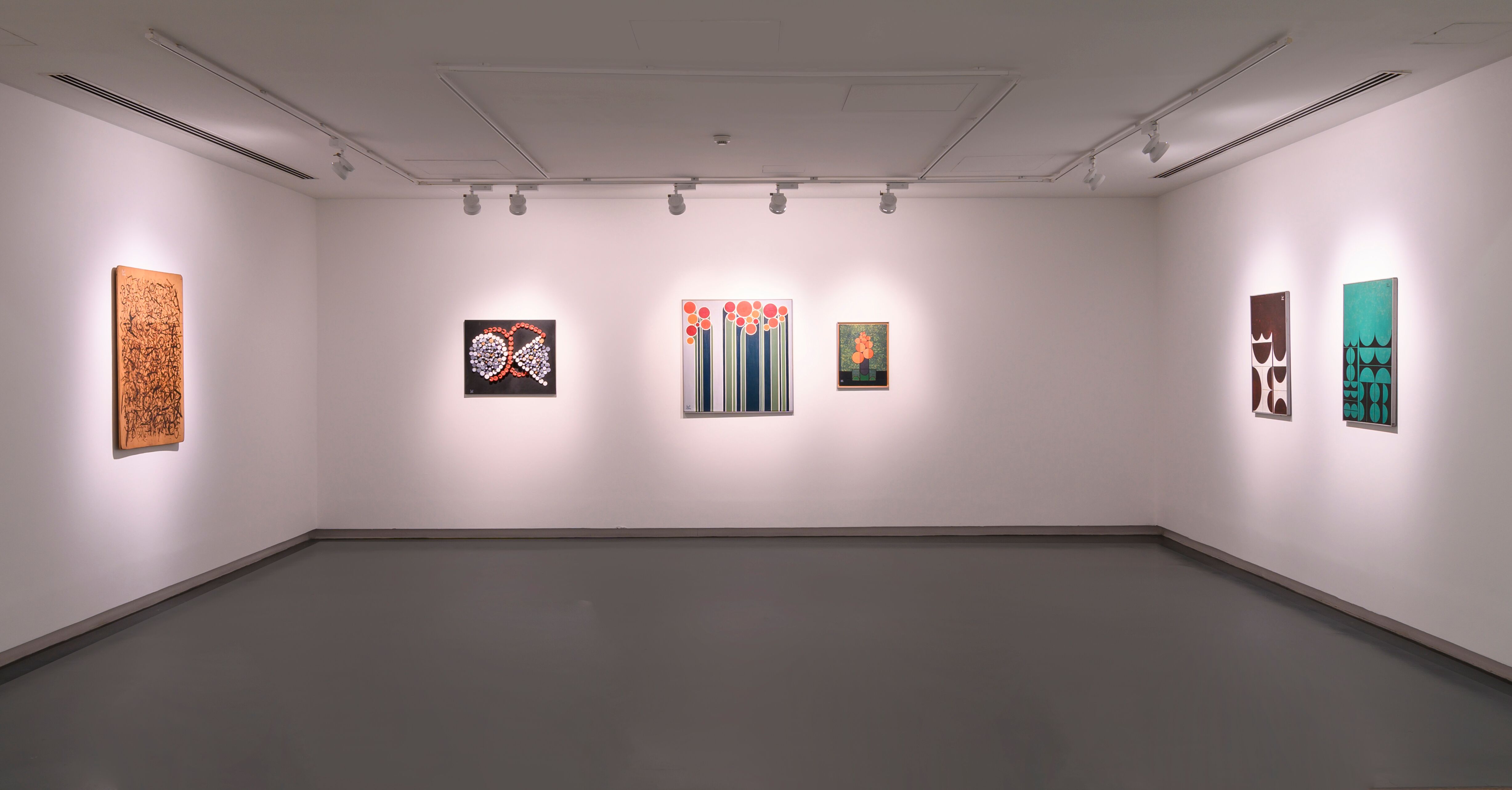
Anwar Jalal Shemza, various works, 1961–1969
Anwar Jalal Shemza, various works, 1961–1969
Mixed media, dimensions variable
Installation view: Sharjah Biennial 14: ‘Leaving the Echo Chamber’
Courtesy of the Estate of Anwar Jalal Shemza
search


Anwar Jalal Shemza, various works, 1961–1969
Mixed media, dimensions variable
Installation view: Sharjah Biennial 14: ‘Leaving the Echo Chamber’
Courtesy of the Estate of Anwar Jalal Shemza
Anwar Jalal Shemza was born to Kashmiri and Punjabi parents and attended the Mayo School of Industrial Arts (now the National College of Arts) in Lahore, Pakistan. In 1952, the artist co-founded the Lahore Art Circle, which included a number of well-known artists of the day, including Moyene Najmi, Syed Ali Imam, Ahmed Parvez and Ali Imam. In 1956, already an established artist and writer in Pakistan, Shemza relocated to London to study at the Slade School of Fine Art. There, having realised that critics viewed Islamic art as purely ‘functional’, he developed a visual language that placed the so-called ‘functional’ (or decorative) aspects of Islamic art in dialogue with the formal and philosophical considerations of Western art history.
Sharjah Biennial 14 presents 13 of Shemza’s works created between 1961 and 1969, surveying his diverse influences during this transitional period and the decisively modern diasporic perspective examined through the prism of both Islamic and Western aesthetics. Drawn broadly and deeply from his surroundings, these works reflect the influence of carpet patterns, calligraphic forms, the Mughal architecture of Lahore and the rural landscape of Stafford, England. The works also elaborate on Western modernism’s interest in geometry and abstraction seen in the work of artists Paul Klee, Piet Mondria, and Wassily Kandinsky. For the artist, the circle and the square held special places in his art practice. As he inscribed in Urdu script on the surface of a painting from this period, ‘One circle, one square, one problem: one life is not enough to solve it.’

Sharjah Biennial 14: Leaving the Echo Chamber